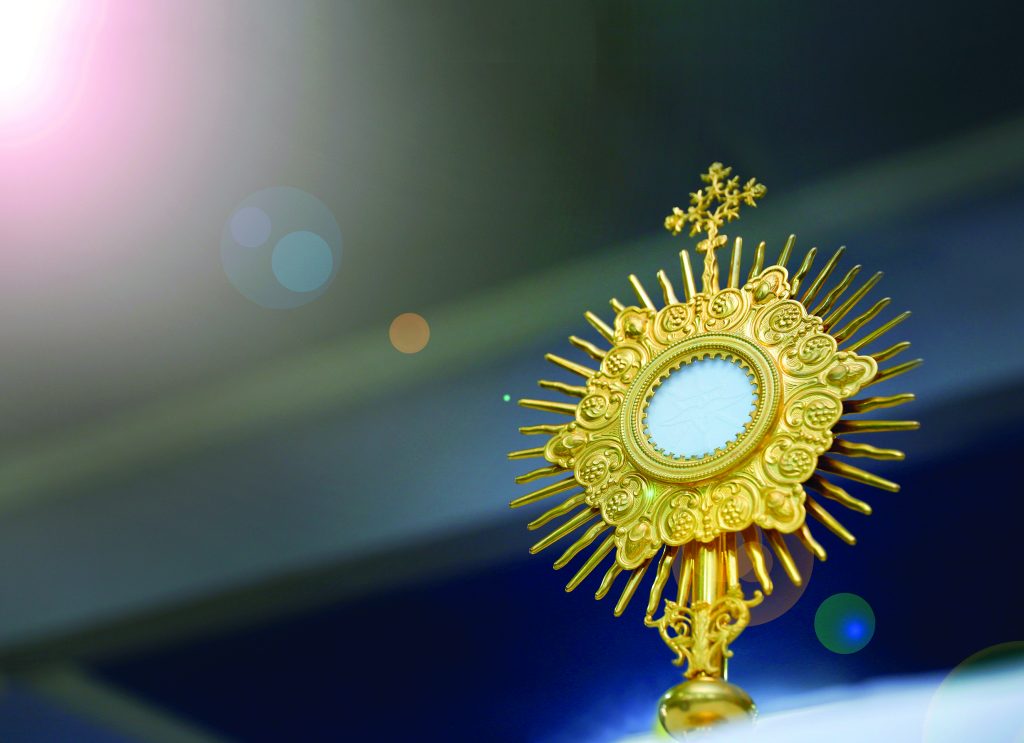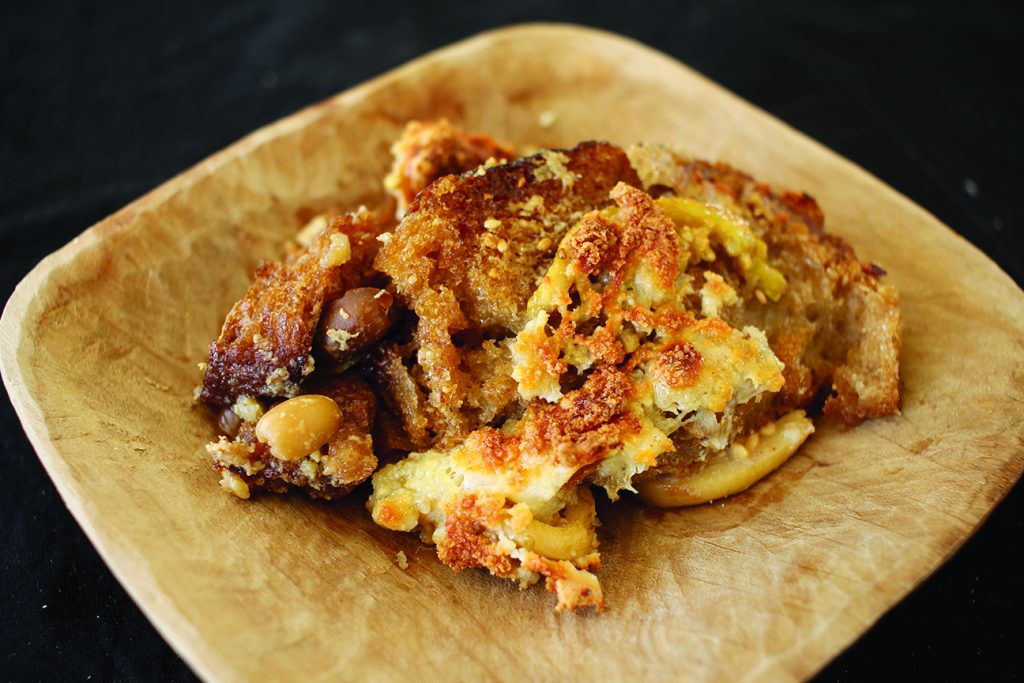LENT & EASTER TRADITIONS
Easter and Holy Week traditions from around the globe
BY MARY POWERS
The beauty of the universality of the Church is that people around the world celebrate the holiest days of the year with rich traditions that stem from a society steeped in Catholic faith. Centuries of fusing Holy Week and Easter customs to local resources and cultural traditions have produced a patchwork of unique liturgical traditions, blessings, art, recipes and more. Here are a few, as recounted by people in our Archdiocese.
POLAND
Perhaps one of the most well-known Polish traditions is the blessing of Easter baskets on Holy Saturday. In anticipation of breaking their fast by eating blessed foods, families put together baskets and bring them for a special blessing.
In Poland, the Eucharist is exposed for adoration from within a tomb that is built around it, and families come to the parish between 9 a.m. and noon to have their baskets blessed, said pastor Father Eugeniusz Bolda, a priest of the Society of Christ for Polish Migrants and pastor of Church of the Nativity of Our Lord in San Francisco.
Among the items blessed each year: bread symbolizing Christ, the true bread of life; butter sometimes shaped into a lamb, reminding the family of the goodness of Christ, the Lamb of God; horseradish, symbolic of the passion of Jesus; meats including sausage and ham as a symbol of God’s generosity; eggs — both decorated (pisanki) and not decorated — to symbolize new life and Christ’s resurrection from the tomb; and salt, as we are called to be the salt of the earth.
On Easter morning families attend an early Mass and come home to begin their Easter celebration — first with a blessed egg and pieces of the blessed food and then with a larger meal.
ITALY
On Holy Thursday after the Mass of the Lord’s Supper, the tradition in the Church is to bring the Eucharist to a separate altar of repose for an evening of prayer symbolizing the agony in the garden and Jesus’ request of his disciples to stay, watch and pray with him. In a tradition said to have started with St. Philip Neri in Rome, in Italy pilgrims visit seven altars of repose in different churches to symbolize seven different “stations” or Scripture meditations on the night of Holy Thursday including the agony in the garden, Jesus’ questioning and interrogation before the Jewish high priests and before Pontius Pilate and King Herod and Jesus’ condemnation to death and taking up of the cross.
NIGERIA
On Holy Thursday, Catholics in Nigeria take turns throughout the night in Eucharistic adoration. “Everyone participates — children, youth and all of the groups of the church,” said Father Christian Anyanwu,

parochial vicar of Church of the Nativity in Menlo Park. Emmaus Day is named for the Gospel story of Jesus meeting disciples on the way to Emmaus to explain the importance and meaning behind the Scriptures and his death and resurrection. In Nigeria, parishes come together on Easter Monday, also known as Emmaus Day, to celebrate the resurrection with a Mass and picnic outdoors. “It is a way to recognize that Jesus has risen from the dead,” says Father Anyanwu. Parishioners play soccer, lawn tennis and table tennis, and play music, spending time together as family — both their immediate families and as a parish family. “It is a sign of the resurrection that Jesus has resurrected — we need to be happy and celebrate together.”
MEXICO
In Mexico, streets are often closed for re-enacting of the Passion play on Good Friday. The faithful silently process in honor of Jesus carrying of the cross on Good Friday. Other traditions include visiting 12 churches in honor of the apostles, or seven churches to remember the trials of Jesus on Good Friday.

A favorite culinary treat is Capirotada or bread pudding. Cathedral of St. Mary of the Assumption parishioner Martha Valdez remembers her family making the recipe each Good Friday. Each ingredient symbolizes a part of the passion. The bread in the recipe symbolizes the body of Christ, the sugar/syrup represents Christ’s blood, cinnamon sticks symbolize the wood of the cross, the cloves and nuts the nails of the cross, and the cheese symbolizes the holy shroud.
CAPIROTADA
(Mexican Bread Pudding)
Ingredients:
2 baguettes, sliced into pieces
2 and 3/4 cups of Piloncillo (unrefined brown sugar)
1 cinnamon stick
2 whole cloves
3 black peppercorns
1 small onion, sliced
1 sliced tomato
1 clove of garlic
2 bananas, sliced
½ cup of pecans
1 package cream cheese
2-2.25 cups Mazola corn oil
Instructions:
1. Slice two baguettes into pieces and toast in a pan until brown. Then in a large frying pan heat two cups Mazola corn oil. Working in batches fry the bread until crispy and browned (about 5 minutes). Place bread onto kitchen paper to absorb the excess oil.
2. In a separate pan, boil 2 and ¾ cups unrefined brown sugar or piloncillo, 1 stick of cinnamon, 2 cloves, 3 black peppercorns, 1 small onion sliced, 1 sliced tomato and 1 clove of garlic. Boil these until you get a thick, syruplike consistency (about 15 minutes). Then strain the mixture in a colander.
3. Next, pour the syrup back into a small pan and boil. Once boiling, dip the fried bread in to glaze the pieces and then put them in a separate dish. You can also toss the bread in together to coat both sides and remove from the pan.
4. Finally, spread cream cheese on each slice of bread, adding the sliced bananas and pecans to finish.
Mary Powers is the assistant director of communications and media relations for the Archdiocese of San Francisco.

